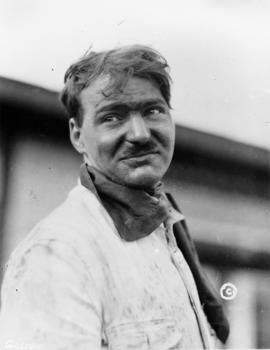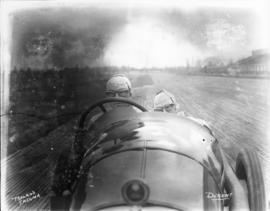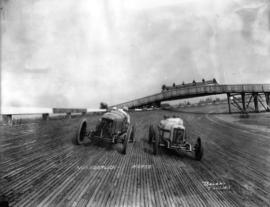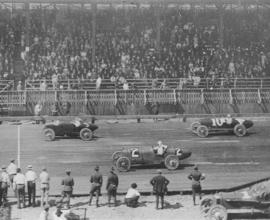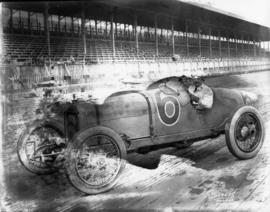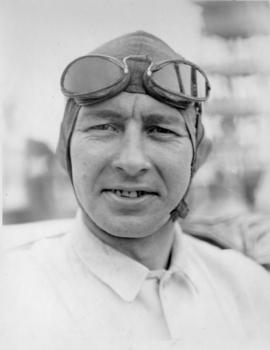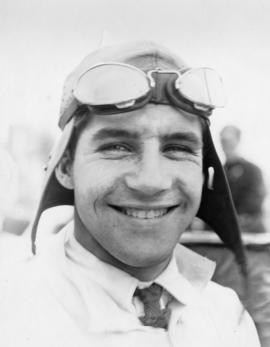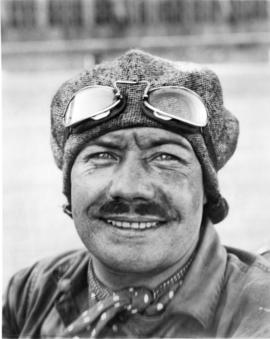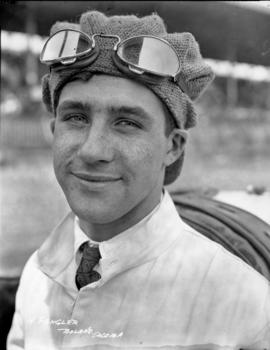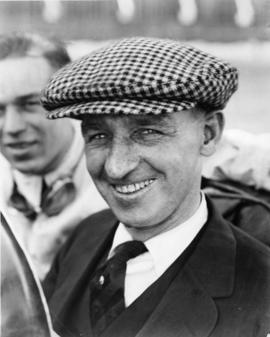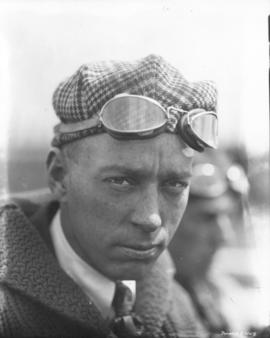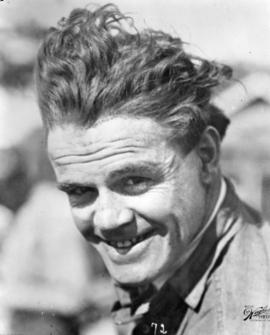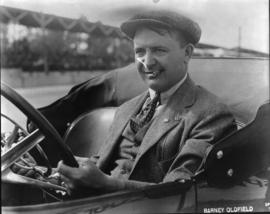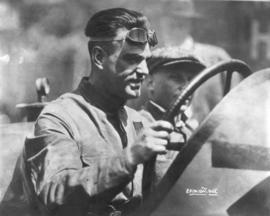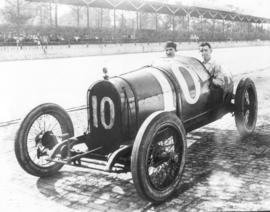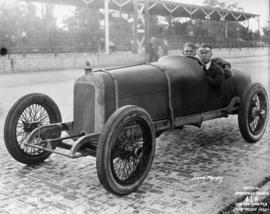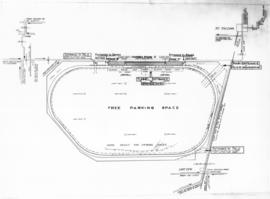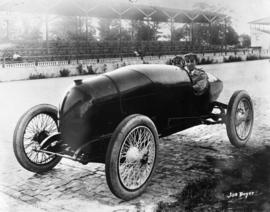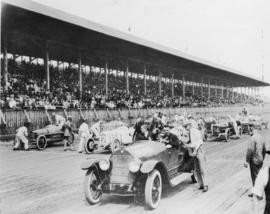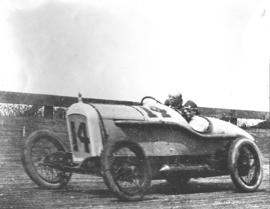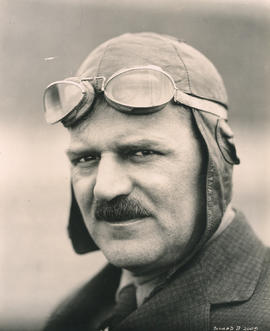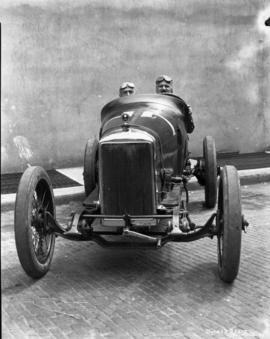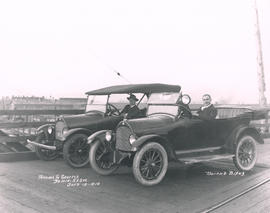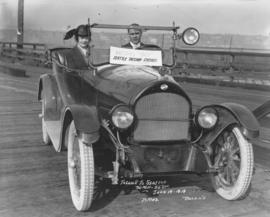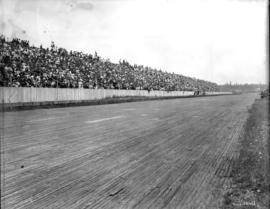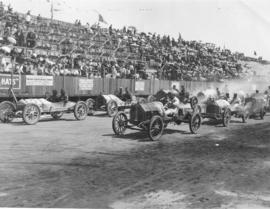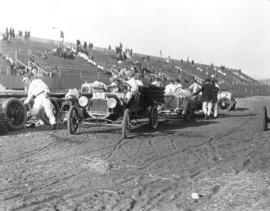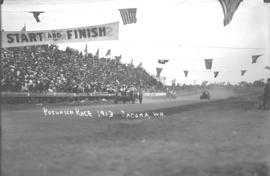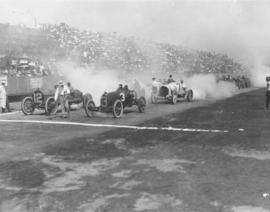- Item
- 1920
Part of Marvin Boland Photographs
ca. 1920. Gaston Chevrolet, the youngest brother of the racing triumvirate, was born in France of Swiss parents on October 26, 1892. He was brought to the United States by his older brother, racing car driver and designer Louis Chevrolet. In 1916, he became a partner with his brothers Louis and Arthur in Frontenac Motors. After initial success, the company went under after World War I. The trio went to work for Monroe Motor Co. In 1920, Gaston broke the European dominance of the Indy 500, winning in a Monroe-Frontenac designed by his brother Louis. His average speed was 88.62mph, a feat achieved with only a four cylinder engine. He was also the first racer to go the distance without a change of tires. His victory was only enjoyed briefly however, he died in a fiery crash on November 25th at the Los Angeles Speedway board track in Beverly Hills, Ca. He crashed in lap 146 and was killed, along with driver Eddie O'Donnell. At the end of the year, he was awarded the recently revived AAA National Champion title for 1920 posthumously. Speedway 086 (TNT 6/29/1920)
Chevrolet, Gaston; Automobile racing--1920-1930; Automobile racing drivers;
